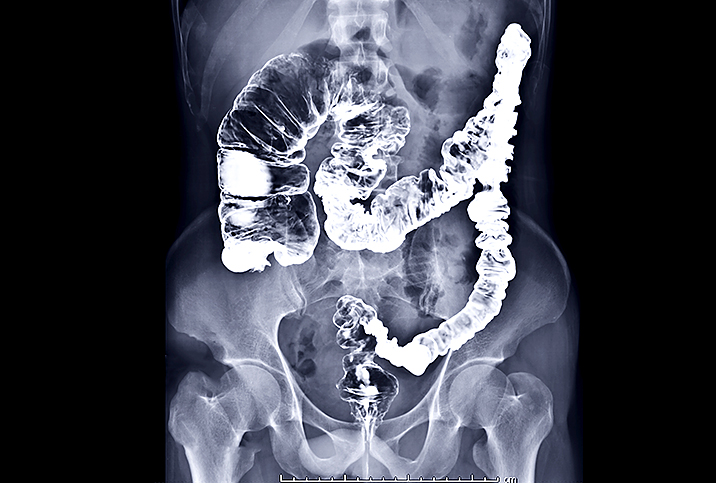Virtual Colonoscopies Look for Cancer From the Outside In

Around age 45—it used to be age 50 but the recommendations changed in 2021—men and women should typically undergo a colonoscopy. If doctors don't find anything of concern, people at average risk get another one in 10 years to detect any changes in the large intestine (colon) and rectum. This exam is meant to screen for colorectal cancer (CRC) and other diseases related to the colon area.
The exam involves a colonoscope, a long instrument inserted into the rectum, which moves through the end of the large intestine. A small video camera attached to the colonoscope allows the doctor to see the colon lining. Since this is a physical procedure, patients are typically sedated and prepare the day before the procedure to clear their digestive tract.
Most people have heard of colonoscopies, but did you know virtual colonoscopies exist, too? Unlike standard colonoscopies, virtual ones examine the colon through imaging from the outside instead of physically through the rectum; they're also known as CT colonographies.
Using a special X-ray, doctors can scan the colon and process the 3-D imaging on a computer.
"A computerized tomography [CT] scan combines a series of X-ray images taken from different angles around your body and uses computer processing to create cross-sectional images, or slices, of the bones, blood vessels and soft tissues inside your body," said urologist Judson Brandeis, M.D., who runs a male rejuvenation center in San Ramon, California, and is the lead author of "The 21st Century Man."
Candidates for a virtual colonoscopy
The virtual procedure is less invasive and doesn't require sedation. You're probably asking yourself, "If virtual colonoscopies exist, why doesn't everyone get one instead of a standard colonoscopy? Shouldn't it be a no-brainer?"
The answer is that the procedure is typically performed only on certain patients. For example, patients who are on blood-thinning medication or have severe breathing problems can be at risk if they're sedated.
Candidates for a virtual colonoscopy can expect roughly the same preparation as for a traditional one. Typically, for more than 24 hours leading up to the exam, you can't eat solid foods and drinking is confined to clear liquids. You want your digestive tract to be empty so the doctor can clearly see your colon. You can expect to be given a laxative and some powdery medication to clear out any residue, and you may take a medication to help the doctor identify colon abnormalities versus stool residue.
The benefits of virtual colonoscopy
According to a 2008 multi-center study, virtual colonoscopy is able to detect 90 percent of polyps—small clumps of cells that can become cancerous—10 millimeters or more in diameter, which is the same accuracy rate as that of conventional colonoscopy.
However, colonoscopes can detect smaller polyps that a virtual colonoscopy might miss. John Hopkins Medicine states the virtual procedure can miss some polyps if they are smaller than 10 mm, which equals 1 centimeter. Brandeis pegged virtual colonoscopy's accuracy at 90 percent for polyps 1 cm or more in diameter and 80 percent for polyps larger than 6 mm.
"As computers have become faster and are better able to handle large amounts of data, the accuracy of these scans in diagnosing cancers has dramatically improved," he said.
People who are able to undergo a traditional colonoscopy should do it, because it can find smaller polyps and the doctor can remove a tissue sample if necessary during the exam. During virtual colonoscopies, doctors aren't able to remove a tissue sample.
"Over time, the sensitivity of virtual colonoscopies are similar to that of actual colonoscopies," Brandeis said, adding that we should expect to see gradual improvements in accuracy for both virtual and standard colonoscopies.
How is virtual better or worse than traditional colonoscopy?
Virtual colonoscopies are typically done once every five years, and traditional ones are typically done every 10 years. Those intervals are based on a clean exam and can vary widely depending on an individual's risk factors. The main advantage of a virtual colonoscopy is that it is less invasive and does not require anesthesia.
"In addition, imaging visualizes areas outside of the colon, and so it is possible to spot other problems in the abdominal and pelvic areas that regular colonoscopy can't reach," Brandeis explained.
If colon polyps are found during a virtual colonoscopy, they need to be removed by regular colonoscopy or a biopsy before they become cancerous. You also are exposed to a small amount of radiation, Brandeis added.
Sill, there is less risk of harm to the large intestine and a lower possibility of tears in the colon or rectum from the virtual procedure compared to a standard colonoscopy. Tears, or perforations, can result from air or carbon dioxide that's inflated into the rectum to create clearer images.
You may feel pressure or an uncomfortable sensation in your abdomen. In this case, doctors may give you medication to ease any discomfort.
Overall, though, the virtual procedure is generally considered safe and painless.


















